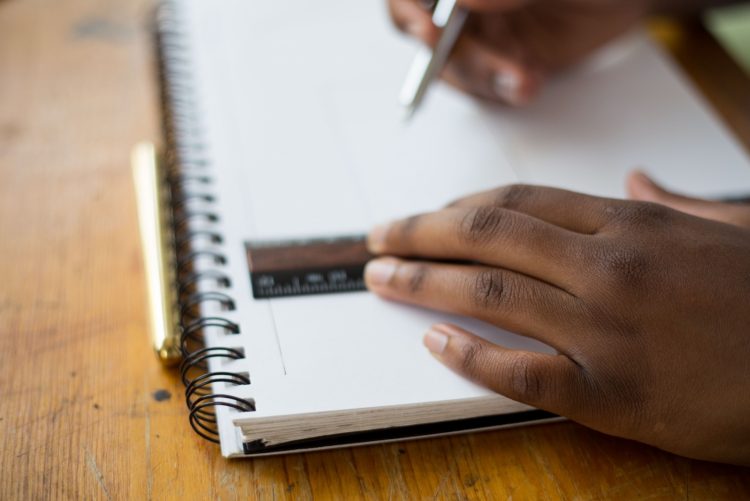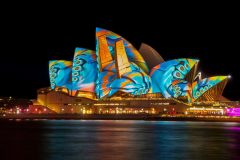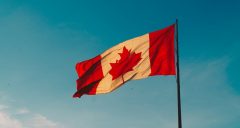- Home
- Nieuwsbrieven
- Registered Designs – Illustrating International Differences
Registered Designs – Illustrating International Differences
Posted on December 02, 2019
Registered Designs are used to protect the appearance of a product. A general guide to Registered Designs can be found on our website. This article provides an introduction to the variations in the formal requirements for drawings from country to country.
Understanding those differences is particularly important when protection is required in multiple countries.
Registered Designs - An Overview
The scope of protection afforded by a registered design is determined principally by its illustration(s). While some territories allow accompanying text forming a description, the illustrations should clearly show all features of the design.
It is not usually possible to add or amend illustrations once an application has been filed. Also, for a valid claim to priority, illustrations in the later application should closely match those used in the first application.

It is crucial to ensure that, from the start, design drawings are prepared that take account of the formal requirements in each and every territory of interest. Otherwise, the priority date may be lost.
A registered design must be new, and must usually have some individual character, differentiating it from earlier designs. Earlier designs are those made publically available before the priority date.* Validity of a priority claim can be decisive in the enforceability of a design registration.
This article is provides an introduction to design drawing formalities in a selection of territories, including the UK, the EU, the US, Japan, China, Australia and Canada. Specifically, this article highlights differences in the number of required/accepted drawings per design, the style/format of drawings, the allowability/use of disclaimers, and the ability to combine multiple designs in a single application.
* Some territories provide a grace period, meaning that disclosures made by the designer prior to the priority date of a design may not count as an ‘earlier design’. Please get in touch with your Abel + Imray contact to find out more.
The UK

In the UK, a registered design application may include from 1 to 12 illustrations per design.
A written description may be included, but is not essential, and does not formally affect the scope of protection afforded by the registered design.
Multiple design applications are allowed. A single application can include up to 50 individual designs for the same type of product.
Photographs, drawings and computer-aided designs (CAD files) are all accepted, and illustrations can be in black & white or colour. The illustrations for each individual design in a multiple applications must all be of the same format, although the format of illustrations may vary from one design to another in the same application.
Illustrations must not contain measurements, other technical information, or anything that isn’t part of the design.
Care should be taken when using surface shading to indicate the shape of a product in drawings, as it may be considered as a surface pattern forming part of the design.
Disclaimers can be used. The disclaimed part of the design should be clearly indicated in the illustrations, optionally supplemented by an accompanying statement in the written description. Various formats can be used for disclaimers, including colour shading, blurring, circling or the use of broken lines.
The European Union

An EU registered design application may include from 1 to 7 ‘protected’ illustrations per design. Three further illustrations can be included (for example to provide a priority claim for other territories), but they will not form part of the registration in the EU.
A written description may be included, but is not essential, and does not formally affect the scope of protection afforded by the registered design.
Multiple design applications are allowed. A single application can include an unlimited number of individual designs for the same type of product.
Photographs and drawings are accepted, and illustrations can be in black & white or colour. The illustrations for each individual design in a multiple applications must all be of the same format, although the format of illustrations may vary from one design to another in the same application.
No explanatory text, wording or additional symbols may be used in the illustrations.
Care should be taken when using surface shading to indicate the shape of a product in drawings, as it may be considered as a surface pattern forming part of the design.
Disclaimers can be used. The disclaimed part of the design should be shown with broken lines, colour shading or blurring.
The United States of America

There is no statutory minimum number of illustrations per design. However, the illustrations must completely disclose the appearance of a product. Traditionally, it has been necessary to include illustrations showing the front, rear, right and left sides, top and bottom of a product. However, a recent Court decision (In re: Maatita 2018)) found instead that the use of a single, two-dimensional plan-view drawing sufficiently disclosed design for a shoe bottom.
Consequently, design applications with fewer illustrations may now be accepted by the US designs office.
A description and a claim is mandatory. The format of the claim is prescribed, and need not be included in a priority application. As a minimum, the description should identify the view shown in each illustration.
Multiple designs can be included in the same application, but it is often necessary to split different designs into separate divisional/ continuation applications before grant.
In principle, illustrations can be based on drawings or photographs, and can be in black & white or colour. However, photographs and the use of colour is restricted to ‘exceptional circumstances’. All the illustrations for each individual design must be in the same format. If different formats are used for different designs in the same application, the designs will need to be split into separate divisional/ continuation applications before grant.
Illustrations that are merely duplicates of other illustrations may be omitted (for example where opposing side views of the product are identical), provided that this is noted in the description.
Drawings of 3D objects should have appropriate surface shading to show their shape. Surface shading can also be used to distinguish between open and solid areas of the design.
Disclaimers can be used. The disclaimed part of the design should be shown with broken lines, colour shading or blurring. A written statement describing the disclaimer in the description is recommended.
Japan

At least six illustrations should be included in a design application, showing the product from all angles.
A written description of the design is usually required, and should indicate the material that the product is made from, and its size.
Each application can include only one design; multiple design applications are not permitted.
Illustrations can be based on drawings, computer graphics or photographs, and can be in black & white or colour. Alternatively, a model or a specimen can be submitted in place of illustrations. Multiple formats can be used for the same design, but not in the same illustration. If photographs and drawings are used together, care should be taken to ensure consistency in product appearance between illustrations.
Disclaimers can be used. Any portion of the product not forming part of the design should be shown with broken lines, enclosed by an indication/bold line, or otherwise marked by coloured shading.
China

There is no requirement for a specific number of illustrations of each design. However, it is recommended to include at least six views showing the product from all angles, as well as a perspective view.
While it is possible to include multiple designs in a single application, the designs must have unity, meaning that there must be a close resemblance between the designs, and that the product must be essentially the same in each design (not merely being the same type of product). Designs found to lack unity can be pursued in one or more divisional application(s).
Photographs and/or drawings can be submitted as illustrations. A brief description can be used to identify the illustrations.
Designs cannot include broken lines in China, and features of illustrations cannot be disclaimed. Features not intended to form part of the design should be omitted from illustrations.
Australia

There is no requirement for a specific number of illustrations of each design, but a sufficient number of views must be provided to fully disclose the design. It is generally advisable to include illustrations showing a product from all angles.
While a single application can include multiple designs for the same type of product, there is no reduction in official fees as compared to filing separate applications.
Illustrations can be based on photographs and/or drawings, and be in black and white or colour. Illustrations of 3D objects should have appropriate surface shading or cross-hatching to indicate shape.
A design application should include a written statement indicating which features of the design are “new and distinctive”. The statement of newness and distinctiveness can be used to provide a form of disclaimer. By themselves, broken lines are not sufficient to act as a disclaimer, but can be sued in combination with the statement. When claiming priority from an earlier design, it is advisable to include in a written description of the priority application an explanation of how the broken lines disclaim part of the design.
Canada

There is no requirement for a specific number of illustrations of each design, but a sufficient number of views must be provided to fully disclose the design. It is generally advisable to include illustrations showing a product from all angles.
An application can include multiple designs for the same type of product. However, it will be necessary to file one or more divisional applications where the designs are not considered to be ‘variants’ of each other. ‘Variants’ are defined as designs applied to the same type of article and not differing substantially from one another.
Photographs and/or drawings can be submitted as illustrations. Illustrations of 3D objects should have appropriate surface shading to show the shape of the object. Illustrations can be in black and white or colour. If using colour, it is recommended to define the colour in the optional written description (e.g. using the PANTONETM system).
A description can be included, but is not mandatory.
Disclaimers can be used. Broken lines, blurring or colour shading can be used to show features which are not part of the claimed design. Additionally or alternatively, a disclaimer can be included in a written description accompanying the illustrations.
Hague System
The Hague System provides a useful and cost-effective route to obtaining Registered Designs in multiple territories via a single application (which can include multiple designs). The territories in which design protection is required must be designated on filing a Hague System application; additional countries cannot be added later.
Once the Hague System application is filed, each designated territory has an opportunity to examine the application for conformity with its local design regulations. Accordingly, the differences in formal requirements mentioned above continue to apply.
All of the territories discussed in the article, except China and Australia, are members of the Hague System.
Practice Notes
In many respects, formal requirements for illustrations are more relaxed in the UK and the EU. While that may be helpful for many applicants in those territories, it is important to keep in mind the substantial differences elsewhere.
If registered design protection in other territories is desired, applicants should at least include in the first application illustrations showing the product from all angles.
Even if photographic and/or colour illustrations are desired in the first application, at least black and white line drawings should also be included. While not discussed in this article, applicants should also be aware that there are also some differences from country to country in how the presence or absence of features such as shading and contour lines in drawings are interpreted.

Applicants should bear in mind that differences in the availability of multiple applications can allow design variations to be covered economically in some countries.
In the UK, the official fees for Registered Designs are very low, and so a UK application can provide an economical way of obtaining a priority date when different drawings/illustrations are to be used in different countries. For example, applicants may wish to include in a first UK application sets of drawings specifically intended for use only in a country with more rigorous formal requirements, such as Japan or China.
If a disclaimer is used in the first application, including an explanation of the disclaimer in a written description accompanying the design may help allow later applications to comply with variations in local requirements for disclaimer formats while also maintaining a right to claim priority.
Applicants should also remember that there are other important variations in design regulations from country to country. For example, while some countries provide a ‘grace period’ during which disclosures of the design by the designer are not considered ‘earlier designs’, others do not. Furthermore, some countries perform substantive examination of novelty and/or individual character, while others do not.
Registered Designs can be deceptively simple to file and obtain. Many countries perform little or no substantive examination of applications, and so shortcomings in Registered Designs can easily remain unseen until it is too late to rectify them.
Seeking professional advice can help to avoid pitfalls and allow you to obtain effective protection for your designs. For further practical advice on registered designs, speak to your Abel + Imray contact or get in touch.
Author

Tom Turner Partner